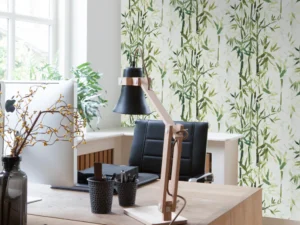Introduction
Working from home offers flexibility, but it also comes with challenges, especially when it comes to maintaining focus and productivity. A key factor that can make or break your success is your work environment. Creating a well-organized, functional home office is essential for boosting productivity and enhancing your remote work experience.
In this post, we’ll explore the steps to design a home office that supports your productivity.
1. Choosing the Right Space
The first step in creating a productive home office is selecting the ideal location. Here’s what to consider:
- Find a quiet, distraction-free zone: Choose a space that separates you from the hustle and bustle of home life. It’s best if you can dedicate a room solely to work, but if that’s not possible, find a corner or area where you can focus.
- Separation of work and home: Having a defined workspace helps your brain differentiate between “work mode” and “relaxation mode,” improving focus during working hours and allowing for better relaxation afterward.
2. Ergonomic Essentials for Comfort
Comfort is crucial for sustaining long workdays without strain. Key ergonomic elements include:
- Invest in a good chair: A chair with proper back support prevents fatigue and ensures good posture. Make sure it’s adjustable to suit your height and desk setup.
- A spacious desk: Your desk should comfortably fit your computer, accessories, and any other work materials. Ensure it’s sturdy and fits well in your workspace.
- Ergonomic accessories: Consider items like a supportive mouse, a keyboard that reduces wrist strain, and a monitor stand to keep your screen at eye level.
3. Lighting and Ambiance
Your office’s lighting and overall atmosphere play a huge role in your mood and energy levels:
- Natural light is ideal: If possible, set up your workspace near a window. Natural light boosts mood, reduces eye strain, and increases productivity.
- Add plants for a calming effect: A touch of nature can improve concentration and reduce stress. Plants not only enhance aesthetics but also promote a serene atmosphere.
- Minimize clutter: A clean, organized workspace reduces mental clutter, allowing you to focus more effectively on tasks.
4. Organizational Tools to Stay on Top of Tasks
A well-organized office helps you stay efficient and productive:
- Use planners and calendars: Keeping a physical or digital planner will help you prioritize tasks and stay on schedule.
- File organizers and storage: Keep paperwork, office supplies, and other materials organized with file cabinets or drawer organizers. This will help prevent clutter and ensure you can find what you need quickly.
Conclusion
Creating a productive home office is all about designing a space that promotes focus, comfort, and organization. By choosing the right space, investing in ergonomic essentials, optimizing your lighting and ambiance, and staying organized, you’ll create an environment that not only boosts productivity but also makes working from home a more enjoyable experience.



